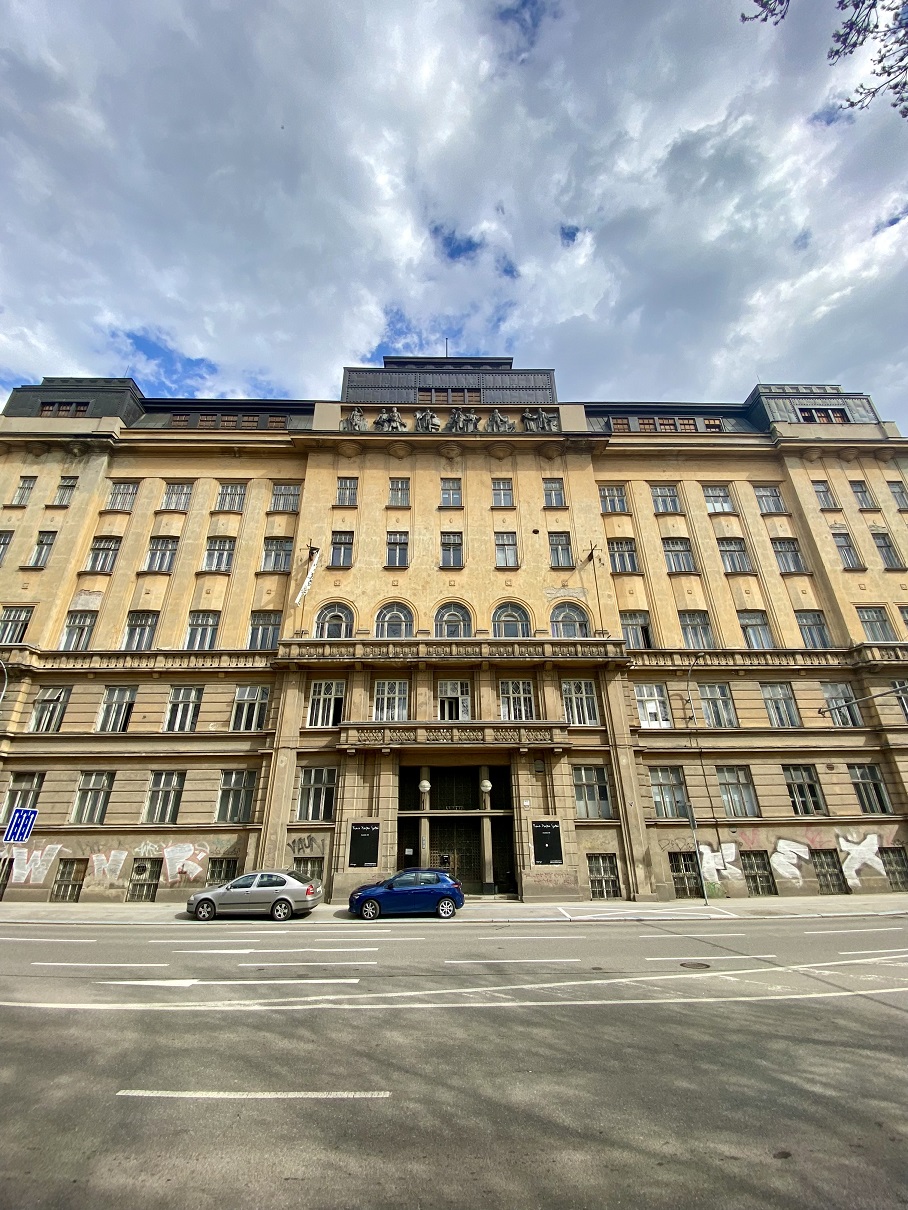
Franz Kafka Hospital

Sightseeing
Reservation required
The building itself was constructed in 1913 as the Brno branch of the Workers’ Accident Insurance Institute, one of the oldest public health insurance institutions in the world. Most people know that Franz Kafka was a writer, but it may be less known that he worked as a senior official for this very insurance company in Prague. Shortly before his death, Kafka noted that he wished to live in Brno—he undoubtedly visited the building that now bears his name.
The 1913 building combines classicist and post-secessionist modernist styles. The entrance features a monumental iron gate with three doorways in the center of the façade. A highlight of the façade is the figurative frieze on the central projection by sculptor Alfred Dressler, depicting six professions: farmer, blacksmith, miner, mason, factory worker, and engineer. The building's main architectural impact lies in its grandly designed roof with a dome. The vestibule, clad in Belgian blue marble and plain white stucco, exudes an elegant yet simple character. It leads to a stairwell with an elevator, carefully designed in the same style. The stucco in the vestibule is finished with fluting.
Today, the palace is a protected cultural monument and functions as a residential facility where people with disabilities are employed, under the management of the non-profit organization AMERFO, led by Brno-based historian Pavel Paleček. In cooperation with the City of Brno and with the support of the Ministry of Labour and Social Affairs (MPSV), the organization has established facilities for people with disabilities, refugees, and organizes cultural activities in the unused premises of a once-renowned building on Brno’s ring boulevard.
For loading the interactive map, please click on the map area.
For loading the interactive map, please click on the map area.